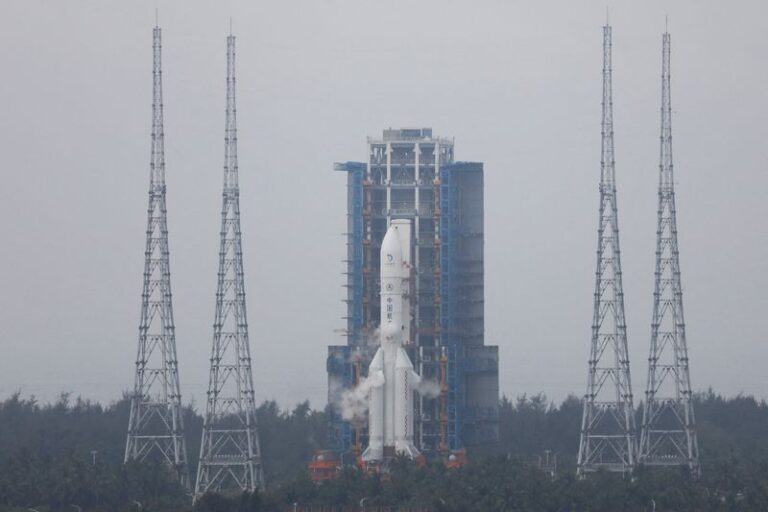Eduardo Baptista and Liz Lee
BEIJING (Reuters) – China’s lunar probe Chang’e-6 has launched from the far side of the moon and begun its journey toward Earth, China’s national space agency said on Tuesday.
The probe’s successful departure from the moon means China is closer to becoming the first country to bring back samples from the far side of the moon, which always faces away from Earth.
The probe left the moon at 7:38 a.m. local time (23:38 GMT) and successfully completed its sample collection mission on June 2-3.
The China National Space Administration (CNSA) said in a statement that Chang’e-6 “survived high-temperature tests on the far side of the moon.”
Compared to its predecessor, Chang’e-5, which collected samples from the near side of the moon, Chang’e-6 faced an additional technical challenge: its inability to communicate directly with ground stations on Earth, according to the CNSA.
Instead, the probe relied on the relay satellite Queqiao-2, which was put into orbit in April, to communicate.
The probe used a drill and a robotic arm to excavate soil above and below the moon’s surface, state news agency Xinhua said.
According to the Beijing Daily, Chang’e 6 raised the Chinese flag on the far side of the moon for the first time after collecting samples.
The CNSA announced Tuesday morning that the probe is currently in lunar orbit and is scheduled to rendezvous with another spacecraft in orbit.
The samples will then be transferred to a return module for return to Earth, scheduled to land in China’s Inner Mongolia region around June 25.
Scientists around the world are watching as lunar samples are brought back to Earth, hoping that any soil collected by Chang’e-6 will help answer questions about the origins of our solar system.
(Reporting by Eduardo Baptista, Liz Li, Ryan Wu and Shanghai newsroom; Editing by Jacqueline Wong and Jerry Doyle)

